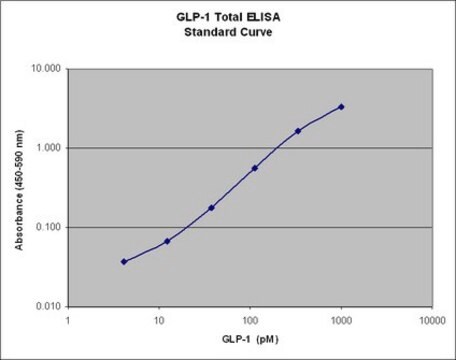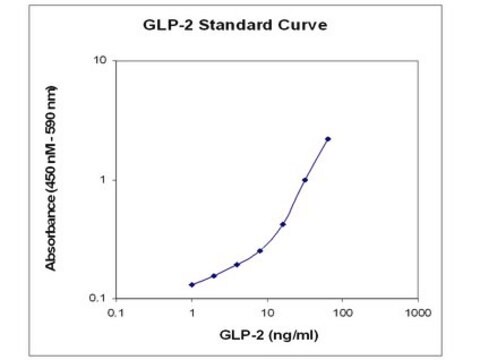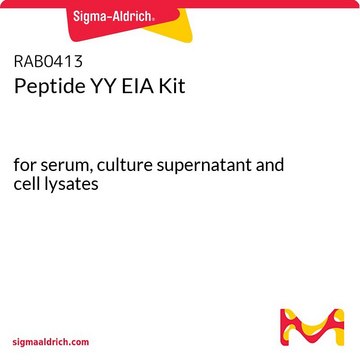EZRMGIP
Rat/Mouse GIP ELISA Kit
measures and quantifies GIP levels in 10 μL serum, plasma or cell culture supernatent
Synonyme(s) :
Gastric inhibitory polypeptide, Glucose-dependent insulinotropic polypeptide, Incretin hormone
About This Item
Produits recommandés
Nom du produit
Rat/Mouse GIP (total) ELISA, This Rat/Mouse GIP (total) ELISA is used to measure & quantify GIP levels in Metabolism & Endocrine research.
Niveau de qualité
Espèces réactives
mouse, rat
Conditionnement
kit of 1 × 96 wells
Paramètres
10 μL sample volume (4hr assay)
assay range
accuracy: 104.2%
linearity: 100.8%
sensitivity: 8.2 pg/mL
standard curve range: 8.2-2000 pg/mL
Technique(s)
ELISA: suitable
Entrée
sample type cell culture supernatant
sample type plasma (K2 EDTA)
sample type serum
Application(s)
research use
Méthode de détection
colorimetric (450nm/590nm)
Conditions d'expédition
wet ice
Température de stockage
2-8°C
Description générale
Application
Clause de non-responsabilité
Mention d'avertissement
Danger
Mentions de danger
Conseils de prudence
Classification des risques
Acute Tox. 3 Dermal - Acute Tox. 4 Inhalation - Acute Tox. 4 Oral - Aquatic Chronic 2 - Met. Corr. 1 - Skin Sens. 1
Code de la classe de stockage
6.1C - Combustible acute toxic Cat.3 / toxic compounds or compounds which causing chronic effects
Certificats d'analyse (COA)
Recherchez un Certificats d'analyse (COA) en saisissant le numéro de lot du produit. Les numéros de lot figurent sur l'étiquette du produit après les mots "Lot" ou "Batch".
Déjà en possession de ce produit ?
Retrouvez la documentation relative aux produits que vous avez récemment achetés dans la Bibliothèque de documents.
Notre équipe de scientifiques dispose d'une expérience dans tous les secteurs de la recherche, notamment en sciences de la vie, science des matériaux, synthèse chimique, chromatographie, analyse et dans de nombreux autres domaines..
Contacter notre Service technique








